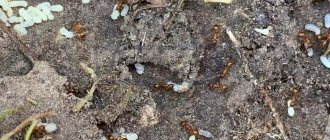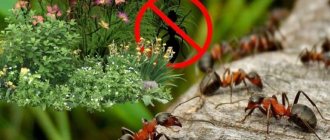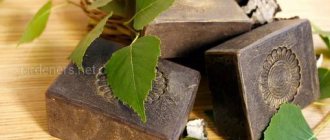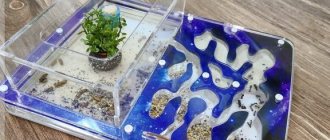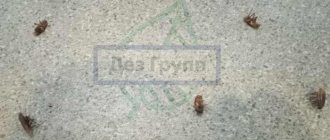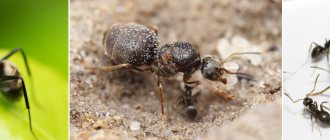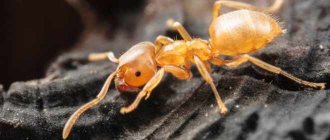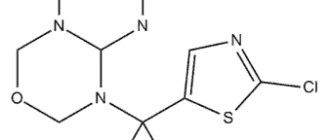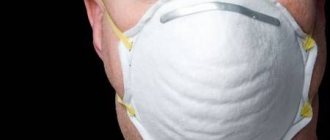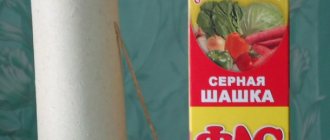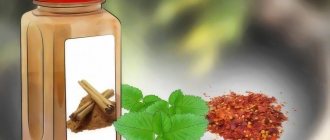03/30/2018 Category: AntsAuthor: Lara Lisina
Ants are not the most pleasant neighbors both in the house and in the garden; they have long been considered pests along with other annoying insects. To get rid of ants, people have invented many chemicals and folk methods. And one of them is the use of millet cereals. But can it be considered effective?
- 2 Why millet
- 3 How to work with millet
3.1 Dry millet
3.1.1 Video: millet against ants
How ants harm the garden
At first glance, the interests of ants and humans overlap little in the garden: humans grow vegetables and fruits, ants build anthills and feed their offspring. However, it often happens that the homes of these insects are located in beds, flower gardens and under trees, which in itself is inconvenient for gardeners. But first of all, this harms the root system of plants, especially young shoots, and ants sometimes eat ripe berries and vegetables. The main danger to the garden is aphids, which suck the juice from the stems, buds and leaves of plants.
Ants breed aphids, which are dangerous for cultivated plants.
In addition, aphid secretions are an excellent breeding ground for many pathogenic fungi, such as black sooty mildew. But it is the ants who breed these tiny pests. Thus, ants cause damage to your area both directly and indirectly.
Advantages and disadvantages of the method
The fight against seemingly harmless creatures should be carried out immediately after you notice the first traces of ants on the site. Otherwise, the pests will multiply and flood the entire garden or vegetable garden, causing irreparable damage to cultural plantings.
Benefits of wrestling:
- preservation of cultivated plants: fruits and flowers;
- the impossibility of infecting plantings with fungus and other diseases spread by insects;
- absence of aphids in the area bred by ants;
- non-oxidized soil.
Disadvantages of wrestling:
- ants enrich the soil with calcium and phosphorus;
- insects eat harmful larvae and caterpillars;
- promote soil fertility.
The ants themselves are beneficial and unobtrusive insects - compared to other pests, the damage from their intervention is minimal. They saturate the soil with useful microelements and kill caterpillars. However, in large numbers, ants cause quite significant harm to the garden: insects eat the petals of sweet flowers and are breeding grounds for aphids, because they love the juice they secrete.
The most effective method, according to summer residents, is a mixture of semolina and sugar. In terms of popularity, it is slightly inferior to dousing ants with boiling water and saline solution. Of course, it will not be possible to get rid of the pest forever using such methods, but with prolonged treatment and control of the summer cottage, you don’t have to worry about an unexpected invasion of ants.
Why millet
The very idea of fighting ants with millet may at first seem unexpected and very strange. After all, there is still no clear explanation of the mechanism of its effect. There are no authoritative scientific studies proving the harm of millet cereals to the ant organism. There are only a few different assumptions.
- Harmful to digestion. One of the simplest and most obvious versions is that millet is harmful to the digestion of ants. Namely, it is assumed that the eaten millet swells in the intestines of the insect to sizes incompatible with life and almost tears it apart. It is not very clear whether for this the ant should eat the whole millet grain or just a part, which casts doubt on the version. Some believe that semolina, which is known to swell greatly when soaked, also gives a similar effect.
- Harmful to ant passages. Another version says that ants mistake millet grains for their eggs (due to external resemblance) and carry them to the anthill. And there, under the influence of increased soil moisture, the grains swell and clog the passages. The ants can neither leave nor enter, and the queen and offspring locked inside die of hunger. Or they leave their home to build a new, more comfortable home.
- Harm to the home. Another version, which is a variation on the previous theme, suggests that the grain softened in an anthill is not dangerous at all for passages. The thing is that mold quickly and easily develops on it, which then spreads throughout the anthill. Insects cannot cope with the fungus, and they have to leave their home and create a new one.
- Harm to the psyche. There is another assumption that sounds very fantastic. Some believe that ants mistake millet grains for their eggs - but not growing ones, but dead ones. This terrifies the insects and forces them to leave their homes in search of a safer home.
Preventive measures on site
In order to achieve the goal quickly, when fighting ants, it is important to know in which places it is best to scatter the grains. They are scattered not only around the anthill, but also on ant trails.
It would also be a good idea to sprinkle millet on the soil in garden beds and flower beds. Particular attention should be paid to crops such as strawberries, currants, cucumbers, grapes, lettuce and fruit trees.
Ants are part of the ecosystem and if there are only a few of them on the garden plot they will not cause any harm, but another thing is the huge number of insects clinging to the beds and trees.
How to work with millet
If you decide to try to get rid of ants using millet, then no matter how it works, you need to attract the attention of insects to it. There are several proven methods.
Dry millet
The dry mixture consists of millet cereals with powdered sugar. To create it, take 100 grams of crushed sugar or ready-made powder per half kilo of millet and mix thoroughly. The resulting mixture is sprinkled on the anthill itself, on the ground around it, on ant paths and wherever you most often saw ants.
Millet groats are scattered on those beds where ants live
Video: millet against ants
Soaked millet
You can give the cereal a sweet taste and thereby attract insects to it in another way. In heated water, stir sugar, old jam, which you don’t mind, candied honey - quite a lot so that the water becomes sickly sweet. Then the cereal is soaked in it for no longer than a quarter of an hour.
Millet is placed in a sweet solution so that it covers the grain with a reserve
The water is drained and the cereal is laid out near the ants’ habitats.
Features of use
Millet against ants in a summer cottage is the best option for gardeners who do not want to use pesticides. The method of using cereals is simple. In addition, the cost of the product is affordable, it is much cheaper compared to special pest control products. The safety of cereals in relation to green spaces, people, and the earth is another argument in favor of millet.
Millet cereal refers to the peeled fruits of cultivated varieties of millet.
To remove ants from your garden plot, you need to eliminate the queen. Failure to carry out this operation is fraught with the deposition of new ovipositions and the appearance of worker ants.
Millet from ants in a summer cottage
They practice using millet and semolina against ants in the country. To do this, sprinkle the beds with semolina and millet cereal. The following areas are especially flavored:
- ant paths;
- berry bushes;
- fruit trees;
- roses.
Place special emphasis on ant nests, diligently dusting them.
Attention! The volume of bait required is calculated based on the size of the ant population. For a small anthill, 500 g of product is enough, for an impressive one – a couple of kilograms. If the ants do not decrease, the procedure will have to be repeated.
Efficiency mark
Since, as mentioned above, no scientific research has confirmed the harm of millet cereals to ants, this folk remedy cannot be considered unambiguously effective. Moreover, opinions on this matter differ greatly.
Some gardeners quite seriously consider millet to be a miraculous panacea against ants and actively advise everyone to join this means of fighting insects.
I read in the magazine “My Beautiful Dacha” Nina Alekseevna Sherstnikova (73 years old) very simple advice, literally: “Do you want to get rid of ants without chemicals? Go to the grocery store and buy millet, sprinkle it on the places where the ants have settled, and they will go away on their own.” I did not find the home of my ants and poured them around the paths and trees where there were the most of them. Today I looked, almost all the ants were offended and left.
Galina Yurievna
https://www.nn.ru/community/dom/dacha/?do=read&thread=2379070&topic_id=53466532
Some, however, clarify that to achieve the desired effect, the cereal should only be dry.
For me personally, millet helps me cope with these fussy and persistent creatures. I generously sprinkle this cereal in a continuous strip around the anthill, as well as across their well-trodden paths. There is one secret: you need to do this in dry weather (and if you are pouring from your hands, then your palms should not be wet either). I don’t know what this is connected with, but for some reason ants do not react to raw millet.
Lyudmila
https://forum.osadovod.ru/threads/kak-borotsja-s-muravjami.67/#post-512
Others confirm that millet cereal can indeed help get rid of ants, but notice that after some time the insects reappear on the site. That is, the effect is exclusively temporary.
I tried to sprinkle millet, this is the effect - they leave the place where it was poured, but organize themselves nearby, where there is no millet... 1 kg of millet showed the result at first, they bought another 5 kg... but they did not sprinkle these 5 kg, as mentioned above - they moved away from him
olya14146
https://www.nn.ru/popup.php?c=classForum&m=forumCutTree&s=1484&do=cutread&thread=2379070&topic_id=53500706
And finally, there are dissatisfied people who claim that in fact millet is absolutely ineffective and ants are not afraid of it, and other people’s rave reviews are nothing more than profanation.
I tried it. My ants don't care about millet. I have the impression that the entire anthill was giggling at me.
Taniatravinckina
https://sazhaemsad.ru/forum/kak-izbavitsya-ot-muravev-v-cvetnikah-i-na-gryadkah-t456–10.html#p10754
Many such gardeners are sure that millet cannot compete with chemical insecticides.
Millet didn’t work on mine either; nothing works on them at all. They only leave the “Great Warrior,” but not for long...
Fisherka
https://forum.prihoz.ru/viewtopic.php?p=759314&sid=13d32a458a669ec23ec98e0730080490#p759314
It is quite possible that the effectiveness of millet cereals in a particular garden plot depends on some unknown external factors. In addition, it remains unclear which millet varieties are suitable for baiting insects. So it’s still not worth recommending it as a universal remedy for ants.
Method 4. Tobacco dust
Tobacco dust has long been known
. This is a caustic and harmful waste from the production of tobacco products. Therefore, I had high hopes for such a powerful tool. To control pests, infusions, decoctions and spraying are used. Of course, I wanted to get results with a minimum of effort, so I decided to spray.
I found a fairly large earthen anthill, which was located next to a young apple tree, dug it up a little and sprinkled it with tobacco dust. About an hour has passed, and what I see: the ants are trying to remove odorous and caustic particles. Some area had already been cleared, but there were few working insects. I hoped that this was due to the toxic effects of tobacco dust. Alas! Another hour later, all my dust insecticide was removed, and the ants were very actively restoring their home after my intervention.
Is this folk method of getting rid of ants dangerous?
Both supporters and opponents of millet cereals agree that if it is dangerous, it is only for ants. Since no chemical additives are added to millet - only sugar - it itself is absolutely safe for both people and animals. The only exceptions are those pets who have an individual intolerance to millet, digestive diseases, or are forced to follow a low-carbohydrate diet. If your pet belongs to one of these categories, you should place the millet in places inaccessible to it.
However, unwashed millet is harmful for birds: it negatively affects their digestion due to the toxins and oxidation products that accumulate in it. If you keep a bird in a country house that has access to the area, it is better to refrain from using millet against ants. The same applies to poultry: you should either give up millet or not let your feathered pet out of the cage while the fight against ants is going on.
Security measures
When working with millet, there is no talk of any safety measures. And how can cereals consumed daily by children in kindergartens be dangerous? In addition, if you use it on a personal plot, it will not cause any harm to the earth, birds, bees or other representatives of the animal world.
Millet can drive away or destroy ants, but only if it interests these insects. Ants do not like millet, this is a fact, but the reasons for such open hostility are still unknown. Still, it is better to combine this folk method with other chemical or physical options.
What can you take instead of millet?
In addition to millet, supporters of folk remedies often suggest using other food products against ants.
- It is proposed to use semolina in the same way as millet - sweeten it and place it in places where ants are active. It is assumed that it will also greatly swell in the insect’s stomach and it will die from indigestion. To cause intestinal problems in ants, soda and yeast mixed with powdered sugar are also used.
- Unrefined sunflower oil, garlic and lemon are not liked by ants because of their pungent odors; they are believed to repel insects. Garlic cloves and lemon peels are placed in those places that need to be rid of ants. Oil is used to lubricate ant paths, as well as dishes and furniture that need to be protected from parasites.
- Black pepper, red hot pepper, mustard powder and cinnamon are scattered along the ant paths. Supposedly, these spices are unpleasant due to their strong odors, as well as their ability to cause digestive irritation.
- Coffee grounds are also sometimes considered an ant repellent. It is most often used in the garden to protect flower beds, berry beds and fruit trees. Dried, sleeping coffee is scattered on the beds and around the trunks.
Effective baits
To prevent a rapid increase in the number of individuals in an anthill, preventive measures must be taken. To do this, all insect movement routes are studied. Then these paths are sprinkled with cereal.
In addition, it is important to scatter the product over the surface of the beds. In this case, special attention is paid to plantings of strawberries, garden strawberries, sorrel, lettuce and cucumbers. In the garden you need to sprinkle the area around the currant and gooseberry bushes, and also take time to walk around all the fruit trees. If rows of insects are noticeable on the bark, paths of small grains are also made around the crown.
Most often, millet is used raw, but it is slightly prepared before use. You can mix 1 kg of cereal with 200 g of powdered sugar. This composition is scattered directly around the anthill or directly on it. The second option involves soaking the cereal in warm water. After 15-20 minutes, granulated sugar, jam, preserves or honey are added to the liquid. Everything is thoroughly mixed and laid out along the insect paths. Or you can immediately soak the millet in prepared sugar syrup or in any fermented jam.
Boric acid not only helps in pest control, but also greatly enhances the effect of millet bait. For 1 kg of cereal, it is enough to take 5 g of the drug. It is allowed to replace millet with semolina. It has the same effect.
The weakness of the method of controlling insects using cereals is the short period of exposure. Cases of pests returning to abandoned homes have been recorded 2-3 weeks after the use of millet. If such a situation occurs, the processing will have to be repeated. At the same time, it is important to combine grain baits with other means, but more aggressive and permanent.
Gardeners often plant mint, lemon balm or tomato bushes around the ant mound. The foliage of these plants has a pungent aroma that insects cannot tolerate. Such proximity forces them to leave their home again, but this time forever.
If it is not possible to plant aromatic plants around the anthill, you can again treat the soil with cereal, but with the addition of any gentle chemical. Ant is perfect for this purpose. The drug is mixed with grain in the proportion specified in the instructions, and the bait is spread around the garden. The advantage of this option is the death of the queen, to whom the worker ants will bring poisoned cereal.
LiveInternetLiveInternet
—Categories
- sweet life (3181)
- knitting (3099)
- to the delight of meat eaters (2702)
- sore point (2381)
- amazing baked goods (2161)
- I will be better. (2002)
- let's have a bite (1906)
- hit the vegetables (1443)
- cellar (1285)
- tips for life (1155)
- not a day without salad (1015)
- unusual dessert (756)
- fish day (719)
- whether in the garden or in the vegetable garden. (708)
- poetry of colors (656)
- sewing and cutting (485)
- holiday (464)
- alluring world of flowers (423)
- I will lose weight 100% (412)
- what's first? (363)
- the pain of the soul flowed onto the paper (337)
- handmade (304)
- music inside us (297)
- interesting story (275)
- wine cellar (252)
- please speak (236)
- interior (156)
- we fast tasty, satisfyingly, with pleasure (151)
- PunchMorsCocktail (145)
- books, films (125)
- like an echo of days long gone (photo) (113)
- pizzeria at home (105)
- bread is the head of everything (96)
- tea break (74)
- a thought appeared (73)
- coffee aromas (73)
- cooking from. from appetizer to dessert (57)
- We teach ourselves (32)
- in palms - crumbs (17)
- computer help (4)
Instructions for use
Those who decide to fight ants with millet need to know where and when to scatter the grains so that they are sure to reach their goal.
It would be a good idea to sprinkle millet on a flower bed or berry patch, because wheat grains will not cause any harm to anyone except ants. To increase the effectiveness of the product and quickly remove all ants, you need to make the millet more attractive to insects, for example, sweeten it.
Ants are known to have a sweet tooth. Before you have time to scatter a handful of sugar, they are right there. Therefore, in order for insects to surely react to the bait, you need to mix millet grains with powdered sugar, taking 100 g of powder for 500 g of millet. The resulting mixture should be scattered along ant trails, around anthills and in other places where insects accumulate. If ants have entered the house, you can place bait near the trash can and behind the baseboard.
There is another way to get rid of annoying ants. Prepare a syrup from sugar, jam or honey and soak the millet in it for a few minutes. Sweet bait is placed in places where ants most often appear.
Semolina, like millet, can be used in the fight against ants. In addition, these insects are very afraid of foods with a strong odor, such as pepper, vinegar, mustard, kerosene, and lemon. It is not necessary to destroy a family of insects; it is enough to simply drive them away from your site.
In order to make cereal more attractive in the eyes of ants, you can try the following recipes.
Powdered sugar with millet
- 500 gr. millet needs to be mixed with 100 gr. powdered sugar. The sweet smell will attract the individual and make it share its find with its brethren and the queen.
- It is best to pour the mixture as close to or onto the anthill as possible. In apartment conditions, you can drip a little honey next to the bait or on it.
Sweet millet
- To speed up the action of the product, millet can be pre-soaked in warm water for literally 10-15 minutes.
- Add sugar, honey or jam to this water to make it very sweet. Sweet millet will greatly increase the interest of the ants and will definitely reach the queen.
- It should be placed in the corners of the room, under the baseboards, near the trash can.
We found out that millet is poison for ants. Now let’s discuss how to properly prepare and use it.
As you know, ants have nothing against sweets, so we mix grains with sugar.
Half a kilogram of millet is mixed with 100 grams of crushed sugar or powdered sugar. The attractive aroma will force hard workers to share the delicacy with the queen and their fellows. The mixture should be poured as close as possible to the location of the colony.
Soak the grains in warm water for 20-30 minutes. Drain the water and mix with jam or sugar. Place piles near anthills and on paths. If insects have infested directly at the dacha or in the house, the “treat” should be placed under the baseboard, in the corners of the rooms, near the trash can.
Powdered sugar will make millet more attractive to ants
Not only millet will help get rid of ants. Store-bought semolina has exactly the same effect. The principle of use is the same.
You can get rid of annoying bugs using strong-smelling products:
vinegar; boric acid; nicotine water (use carefully, the substance is toxic to humans); cinnamon; pepper; drills; lemon juice; cheap perfume; kerosene; mustard powder.
It should be recalled that the productivity of a particular method depends not only on the means used. The result is affected by air temperature, precipitation and humidity. Therefore, you may have to go through several options until you find the most effective means to destroy ants in your garden.
Using millet against insects in the country You can use millet to remove ants from the garden in various ways.
It is enough to sprinkle it around a tree or on an anthill so that insects no longer disturb the plants. Often gardeners are faced with the fact that ants do not like millet
Powdered sugar will help attract the attention of pests in such a situation. Just mix a kilogram of cereal with a glass of crushed sugar, and spread this mixture in places where insects are most concentrated. Millet helps no less effectively if it is soaked in hot water for a few minutes.
You should add jam, honey or sweet syrup to the steamed grains, after draining the excess liquid. Sweet millet should be placed in the garden next to the ant's nest.
The effectiveness of these methods of pest control is evidenced by numerous reviews of millet.
